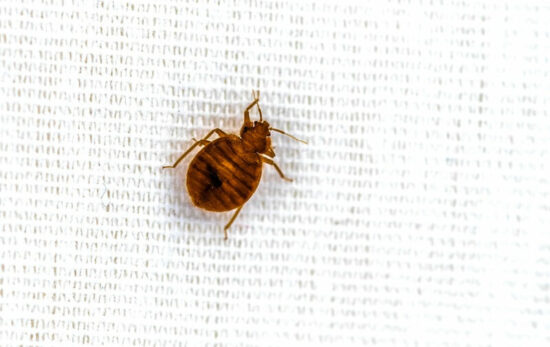After a treatment, the first thing homeowners want to know is whether their bed bugs are gone or not.
Fortunately, there are some obvious signs you can look out for. Read this guide to learn what they are!
Table of Contents
How To Know If Bed Bugs Are Gone
There is nothing pleasant about dealing with a bed bug infestation. Treatments can be extensive, and it can seem like forever before the issue becomes a thing of the past. But before you can relax and get your life back to normal, it’s important to make sure that the bed bugs are completely gone.
How can you tell if the bed bugs are gone? While the most reliable option is to let your pest control specialist do a thorough inspection, there are several signs that you can look for on your own.
Let’s take a quick look at some of the signs that will help you know if your bed bugs are gone or still lingering. It’s important to note that the following steps should be taken on a regular basis until you are certain that the bed bug infestation is no longer a problem. Making a quick, one-time check is not going to be enough.
A little extra work in the weeks following your bed bug treatment will save you time, money, and aggravation in the long run.
1. Look For Living Bugs
One of the easiest ways to determine that the bed bugs are not done is if you still see some crawling around. Take the time to check all the nooks and crannies of your mattresses, couches and other furniture. Look around baseboards, in bureaus, wardrobes and closets to see if there are any bed bugs that are alive. What you want to look for is anything that kind of looks like a brownish, red apple seed. If you find what you think are bed bugs, then you will need to take action or contact the pest control specialist who did your treatment.
- Kill bed bugs and bed bug eggs
- Use spray as a spot treatment around bed frames, mattress seams/tufts/folds, and baseboards
- Kills even the toughest bed bugs
- The continuous spray Comfort Wand easily gets into hard-to-reach areas
If there are still living bed bugs around, then you may find tiny red spots on your sheets or pillow. These spots are actually bed bug nymphs that get crushed under your body while you sleep. This is an easy indication that these critters are still around in your bed.
2. Check For Bites
Finding fresh bed bug bites on you or a member of your family is another definite sign that your bed bugs are not gone. If you have tiny, itchy bumps on your skin, or something that looks like a red rash, then you are most likely dealing with bed bug bites.
You are probably already familiar with bed bug bites if your living space has recently been treated, so look for any bites that appear post-treatment.
3. Keep An Eye Out For Shells And Fecal Matter
After your home has been treated, and you’ve cleaned up any bed bug debris, you shouldn’t see any more signs of shells or fecal matter. Since bed bugs frequently shed their exoskeletons, seeing small, white shells along baseboards, mattress seams, or cracks in the floor is a signal that the treatment didn’t remove all of the bed bugs.
It’s also important to search for fecal matter. Bed bug droppings kind of look like small, red or black flecks. Pillows, sheets or baseboards are all places where you are likely to find evidence of fecal matter.
If your bed bugs are gone, you won’t see any of these signs.
4. Place Interceptor Traps
Just to be sure that you haven’t missed anything, we suggest placing interceptor traps around your living space. What is an interceptor trap? It’s a type of bed bug trap that you put under the legs of your bed, couch, chairs or tables. If there are bed bugs around, you will be able to see them caught in the trap. It’s a great way to actually see the scope of the continuing problem and know if your bed bugs are gone or not.
These traps come in a couple of forms, and they both work on the same basic principle. The sticky cardboard interceptor trap causes bed bugs to remain stuck to the cardboard. The other type is shaped like a bowl and is designed so that bed bugs can easily crawl in, but they can’t crawl out. Finding bed bugs caught in any of the traps you put out is a clear indication that you are still dealing with some level of infestation.
If you don’t see any of the above signs at about three weeks after treatment, then there’s a good chance the bed bugs are gone. However, in most cases you’ll need to wait another couple of weeks to see if any bed bug eggs have hatched.
What Impacts The Likelihood Of Them Being Gone?
It can be hard to know if bed bugs are gone, because no two infestations are alike. Some can be resolved with just one treatment, while others may need multiple treatments.
There are several factors that may contribute to the success or failure of an initial treatment. If you are noticing bed bugs even after you have treated your home, then it could be due to one of the following reasons.
Infestation Size
The first factor (and maybe one of the most significant ones) is the size of the initial bed bug infestation. In general, larger infestations are more difficult to treat. There are exceptions to this, but it can be very difficult to target every bug in a large infestation. This is especially true in a large home, multi-story building, or if the infestation was not handled right away.
Female bed bugs are prolific breeders, and a single female is able to produce hundreds of eggs in her lifetime. Considering that a bed bug can live for ten months to a year, it doesn’t take long for a few of these pests to become a huge infestation. Left to grow untreated, a large colony of bed bugs can be extremely difficult to treat in one go.
Treatment Method
When it comes to bed bugs, most pest control companies have multiple treatment methods in their arsenal. The most common bed bug treatment types are chemical, heat or a combination of the two. The one they use will depend on the extent of the infestation, where the infestation is, and if the treatment area is a single family home or a multi-family home.
If the pest control specialist decides to try a chemical treatment first, they will usually use a multi-chemical approach. Common chemicals used to treat bed bugs include pyrethrins, pyrethroids, desiccants and insect growth regulators. The idea behind this approach is that these different chemicals target different things. Pyrethrins flush out and kill the bugs, desiccants dry out the shell of the bugs, and growth regulators help to keep juveniles from growing into adults.
- Kill bed bugs and bed bug eggs
- Use spray as a spot treatment around bed frames, mattress seams/tufts/folds, and baseboards
- Kills even the toughest bed bugs
- The continuous spray Comfort Wand easily gets into hard-to-reach areas
Chemical treatments can be pretty effective if they are used before the situation gets out of hand, and they are usually cheaper than the heat method. When a combination of chemical mist and powder is used, it becomes a treatment that may be able to target bed bugs at many different stages.
However, chemical treatments may not work against bed bug eggs, so more than one treatment is often required. Most of the time, chemical treatments need to be done over a period of several weeks, and there is no guarantee that these treatments will completely work.
With a heat treatment there is usually success after just one treatment. The heat is able to reach all the places where bed bugs hide, unlike chemicals, and you don’t have to worry about any type of dangerous residue being left behind.
Understanding the kind of treatment you chose will help you have more certainty when it comes to knowing if your bed bugs are gone. We highly recommend using a combination of heat and chemicals. Typically, heat will be used inside, and chemicals will be placed around the home as a barrier. Ultimately, the final procedure will depend on the findings of the exterminator company.
Home Type
Another factor that may determine whether or not bed bugs are gone is the type of home that is being treated. Single family homes are generally easier to treat than multi-family homes, but this is not always the case, and each situation is different.
In a single family home scenario, there is only one unit being treated. This often makes things easier because there is no threat of reinfestation from an adjoining unit. However, a single family home needs to be handled like a multi-family home because bed bugs can quickly travel from room to room. If the entire home is not treated, then the bugs that are in other rooms will just return to the treated room later on. It’s often good to also treat adjoining areas like garages and laundry rooms.
Condos, apartments and multi-family homes are the kinds of living spaces that are notorious for being the most difficult to treat.
The reason for this is the sheer size and scope of these dwellings. For example, if your neighbor has bed bugs and has their unit treated, the chances are pretty good that the bed bugs will just move into adjacent apartments or units. The bed bugs will seem to be gone, but they are pretty much guaranteed to show up somewhere else.
In these types of buildings, the best thing to do is to treat all of the units at the same time with chemicals, heat or both. This doesn’t guarantee that the bugs will be gone after only one treatment, but there is a better chance for success. Many pest control companies will add the additional step of caulking all cracks and crevices, and we suggest installing a door sweep as added protection.
Conclusion
Figuring out how to know if bed bugs are gone isn’t complicated. It just requires you to be observant and know where to look.
If you’ve recently had a treatment for bed bugs and aren’t sure if these insects are gone, send us a message. We’ll give you some tips and feedback!



